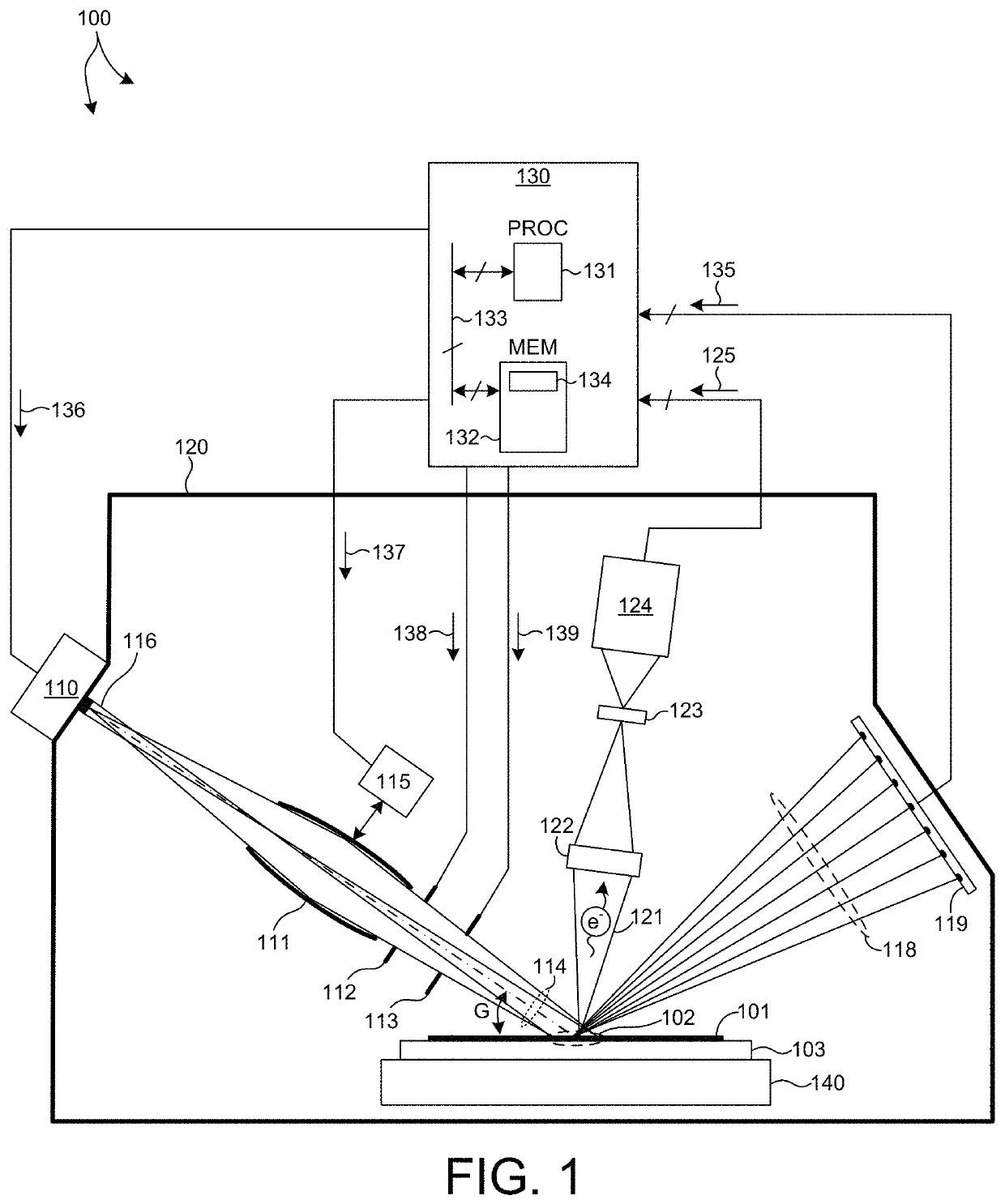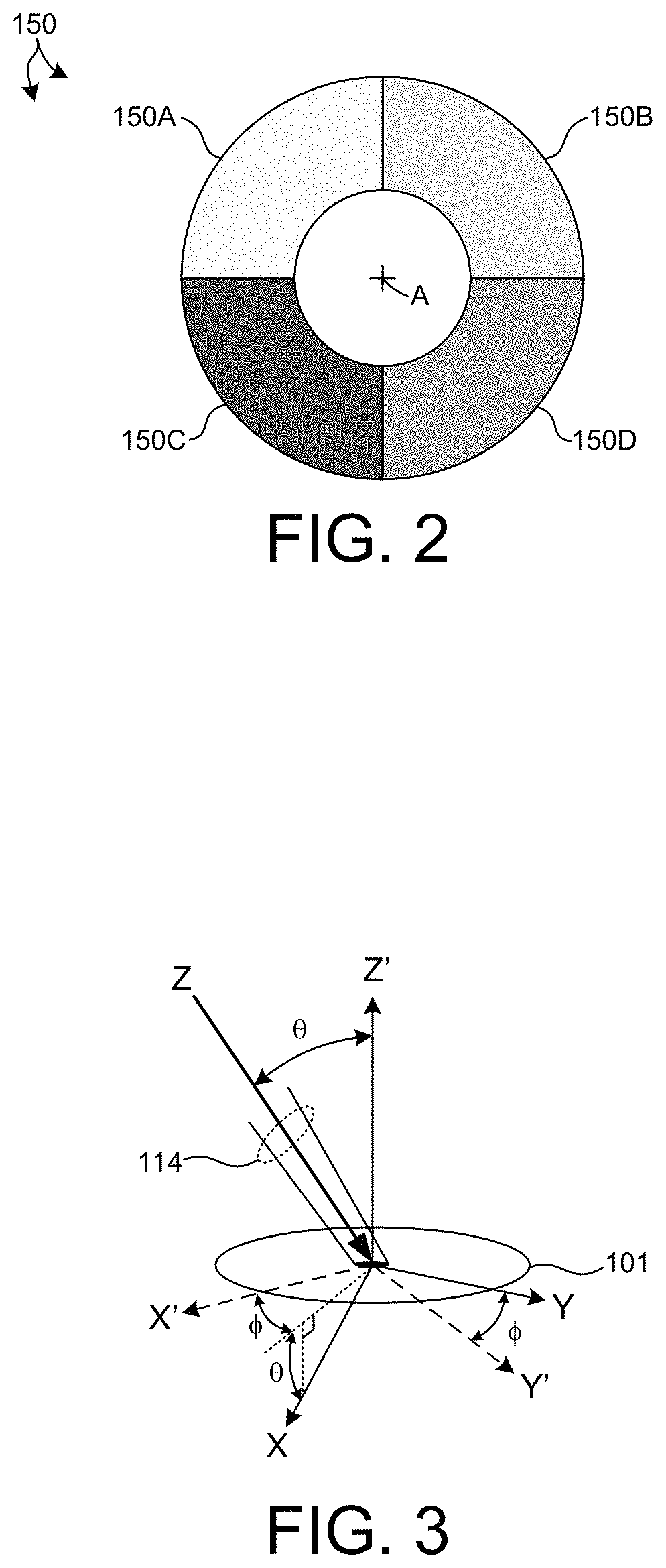Systems and methods for combined x-ray reflectometry and photoelectron spectroscopy
a technology of photoelectron spectroscopy and reflectometry, applied in the field of xray metrology systems and methods, can solve the problems of limited information concerning the composition and shape of nanostructure materials, difficult characterization, limited characterization, etc., and achieves improved measurement accuracy, improved throughput and measurement accuracy, and improved measurement performance
- Summary
- Abstract
- Description
- Claims
- Application Information
AI Technical Summary
Benefits of technology
Problems solved by technology
Method used
Image
Examples
Embodiment Construction
[0031]Reference will now be made in detail to background examples and some embodiments of the invention, examples of which are illustrated in the accompanying drawings.
[0032]Methods and systems for measuring structural and material characteristics (e.g., material composition, dimensional characteristics of structures and films, etc.) of semiconductor structures associated with different semiconductor fabrication processes with a combined x-ray reflectometry (XRR) and x-ray photoelectron spectroscopy (XPS) measurement system are presented.
[0033]In one aspect, a combined XRR and XPS system includes an X-ray illumination source and X-ray illumination optics shared by both the XRR and XPS measurement subsystems. Sharing a common X-ray illumination source and X-ray illumination optics reduces system complexity, cost, and machine footprint in a fabrication facility. In addition, a combined XRR and XPS system increases throughput and measurement accuracy by illuminating the same area of th...
PUM
| Property | Measurement | Unit |
|---|---|---|
| photon energy | aaaaa | aaaaa |
| grazing incidence angle | aaaaa | aaaaa |
| grazing incidence angle | aaaaa | aaaaa |
Abstract
Description
Claims
Application Information
 Login to View More
Login to View More - R&D
- Intellectual Property
- Life Sciences
- Materials
- Tech Scout
- Unparalleled Data Quality
- Higher Quality Content
- 60% Fewer Hallucinations
Browse by: Latest US Patents, China's latest patents, Technical Efficacy Thesaurus, Application Domain, Technology Topic, Popular Technical Reports.
© 2025 PatSnap. All rights reserved.Legal|Privacy policy|Modern Slavery Act Transparency Statement|Sitemap|About US| Contact US: help@patsnap.com



